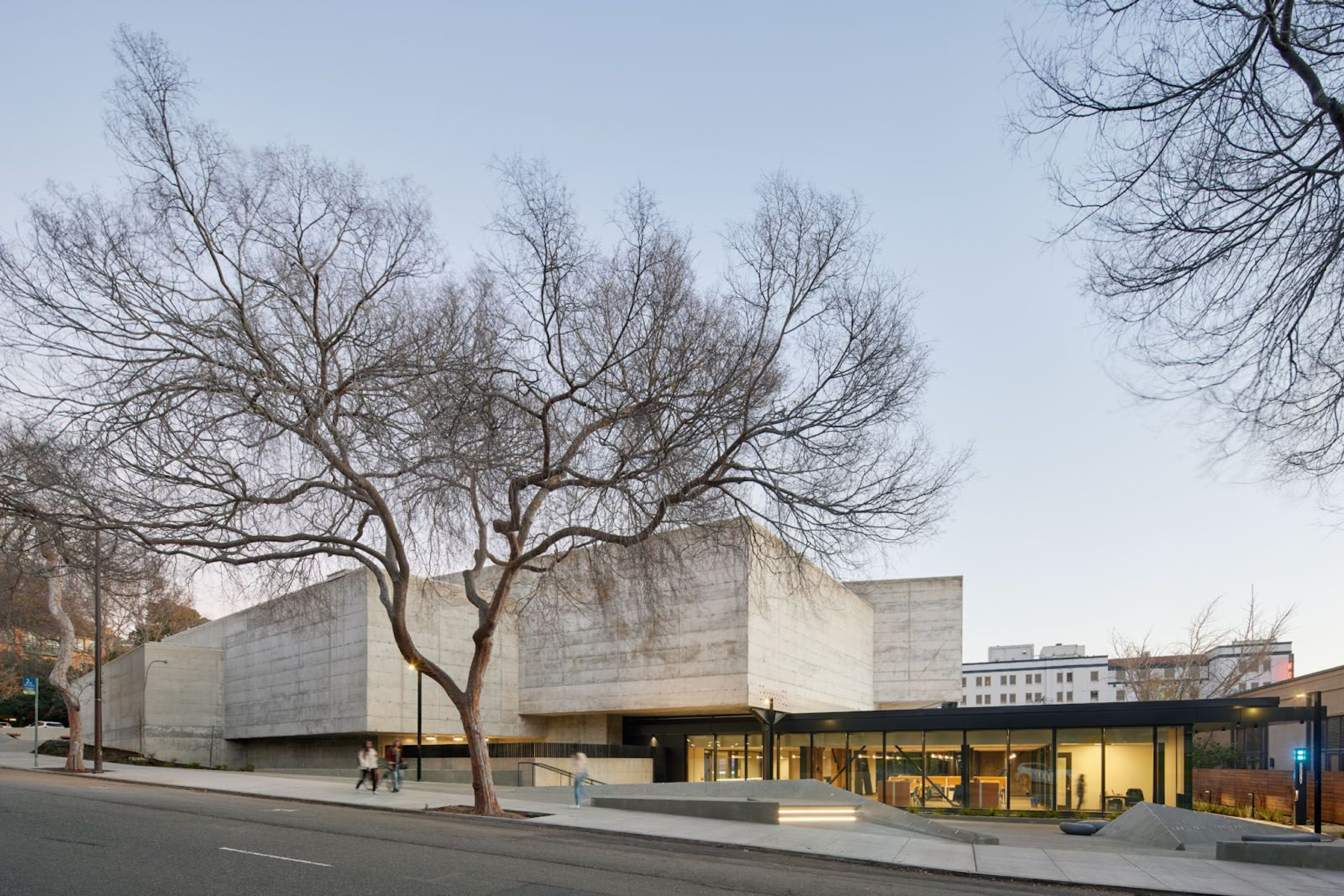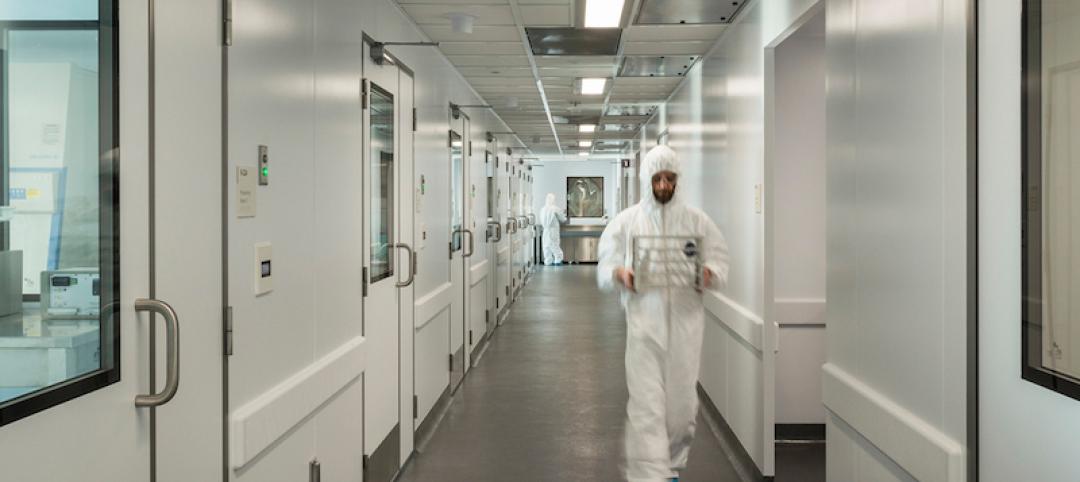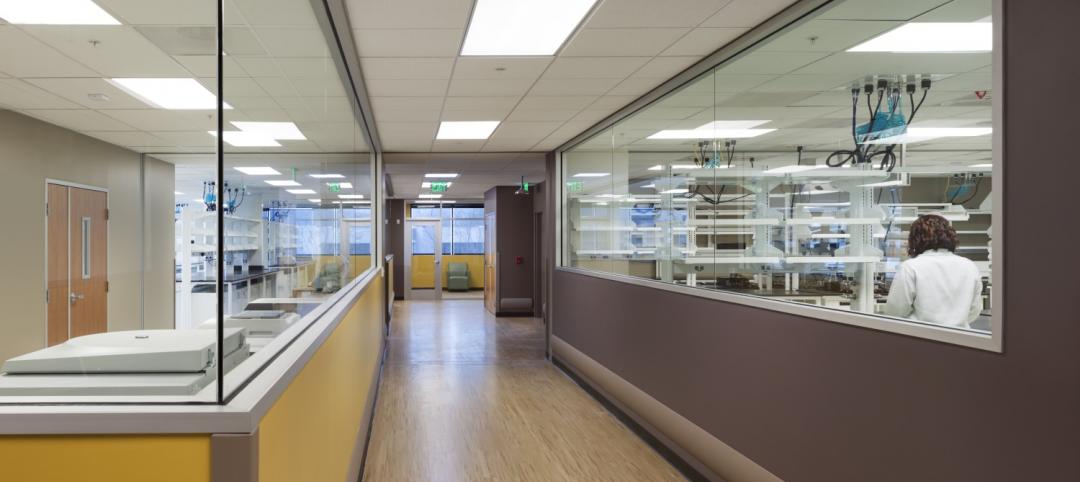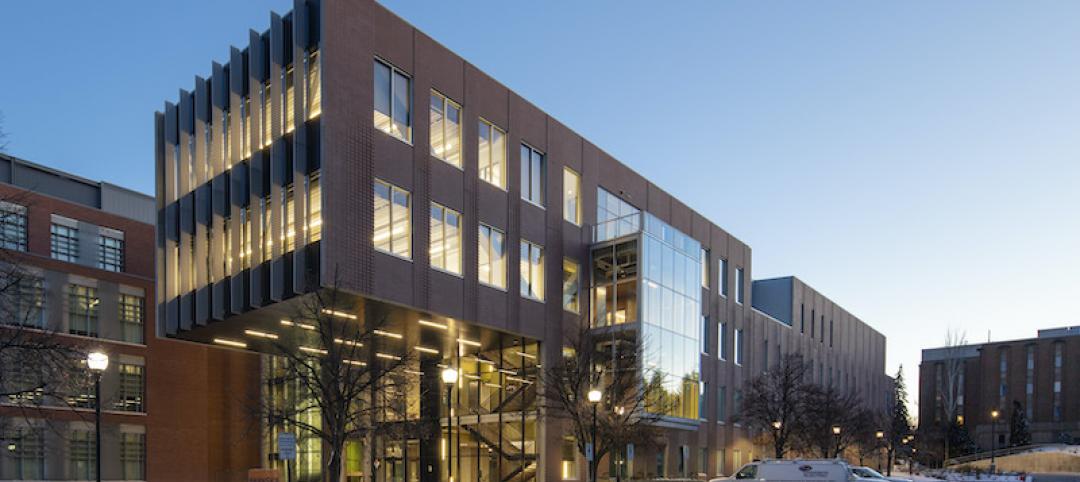After extensive renovation and an addition, the former Berkeley Art Museum and Pacific Film Archive at the University of California, Berkeley campus reopened in May 2022 as a modern life science lab building. The brutalist-style, historically significant structure, designed by Mario Ciampi, had been vacated in 2014 after being deemed seismically unsafe. MBH Architects, first brought on for a feasibility study, designed the renovations needed to make the building well-suited for life science laboratories while preserving the structure’s historical significance.
The design for the Bakar BioEnginuity Hub includes a glass-fronted addition and two new public plazas, as well as well-equipped research space, which is often cost-prohibitive for the young companies the facility will accommodate. MBH identified four major challenges to renovating the structure to satisfy the life science requirements:
- Upgrading structural performance to the current code
- Designing a life science and coworking program to fit within the building’s irregular geometry
- Addressing life safety and substantial mechanical modernization
- Performing renovations and upgrades while preserving the building’s historical character
Seismic performance, water intrusion, and acoustic performance, were addressed while bringing the building up to code. Mechanical, electrical, and plumbing infrastructure was overhauled, including the replacement of existing gas service with all-electric systems. This allowed the project to achieve low EUI, operational carbon neutrality, and Net-Zero HVAC water-use, as well as to meet LEED Gold requirements. Because the building is nearly all concrete, including floors, walls, and ceilings, the team was challenged to make all upgrades, including new modern lighting while minimizing the amount of cutting of the original structure.
Programmatic elements include a laboratory, open office areas, collaboration spaces, private offices, conference rooms, an auditorium, an undergraduate program area, terraces, and public outdoor spaces. The former museum’s upper-level galleries became glass-fronted labs that overlook dramatic cantilevered ramps hanging within a sky-lit double height space. These ramps and other parts of the museum’s circulation system that once led visitors from gallery to gallery have been preserved to foster interaction between groups of people who might not otherwise have an occasion to converse. This attribute furthers the university’s goal of encouraging innovation among scientists.
To spiff up what could otherwise be sterile-looking lab spaces, the design team infused the labs with liveliness by making walls brightly colored and importing natural light by uncovering and replacing skylights that had been covered to protect artwork from ultraviolet light damage. Workspaces and common area materials provide forms that contrast and complement the original structure and provide a welcoming environment.
On the Building Team:
Architect/Designer: MBH Architects
Structural Engineer: Forell | Elsesser
MEP: PAE
Historical Consultant: Page and Turnbull
Acoustics Consultant: Salter Associates
Lab Consultant: ZGF Architects
Civil Engineer: Luk & Associates
Landscape Architects: Jett Landscape Architecture + Design
General Contractor: Plant Construction
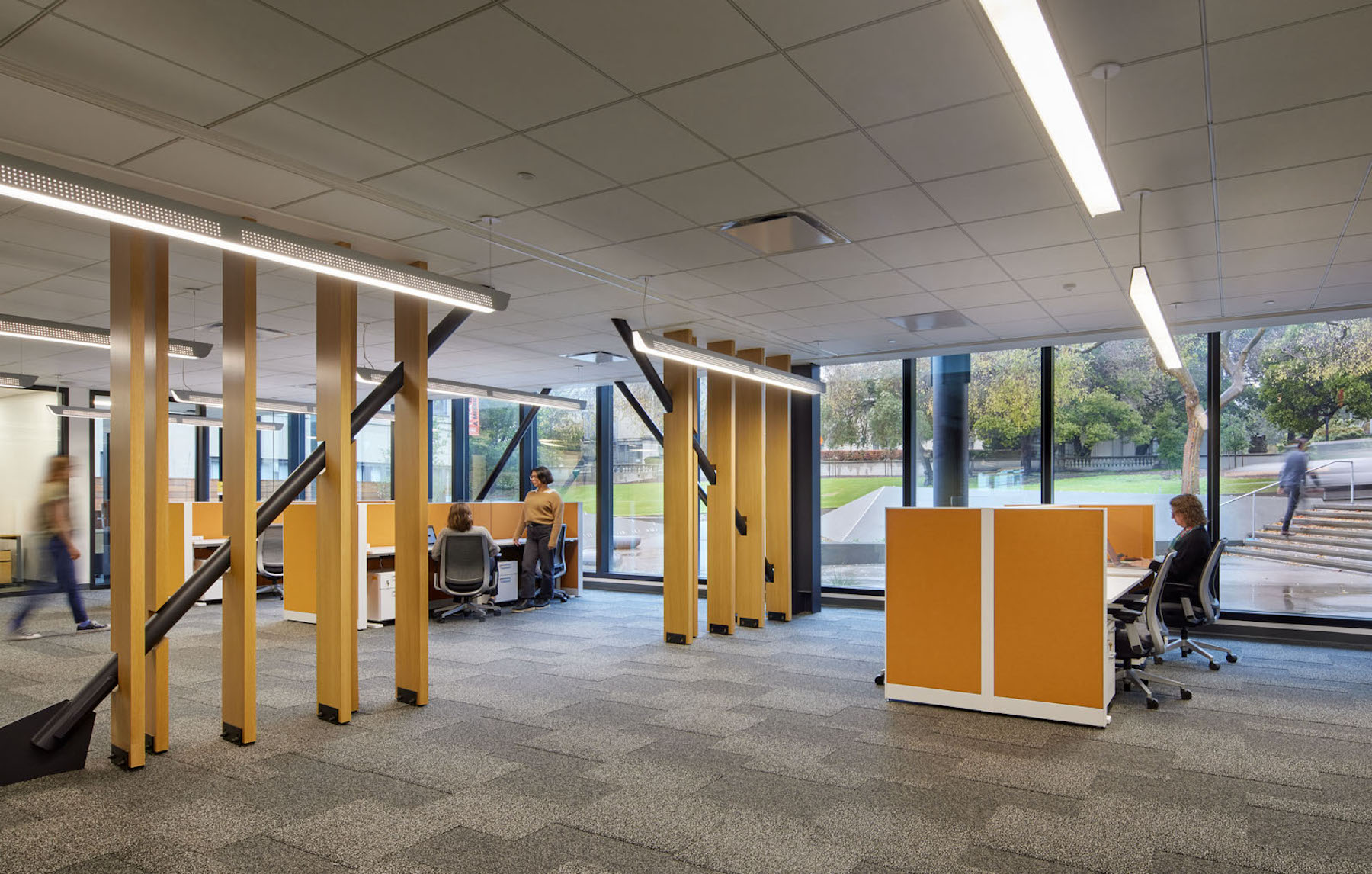
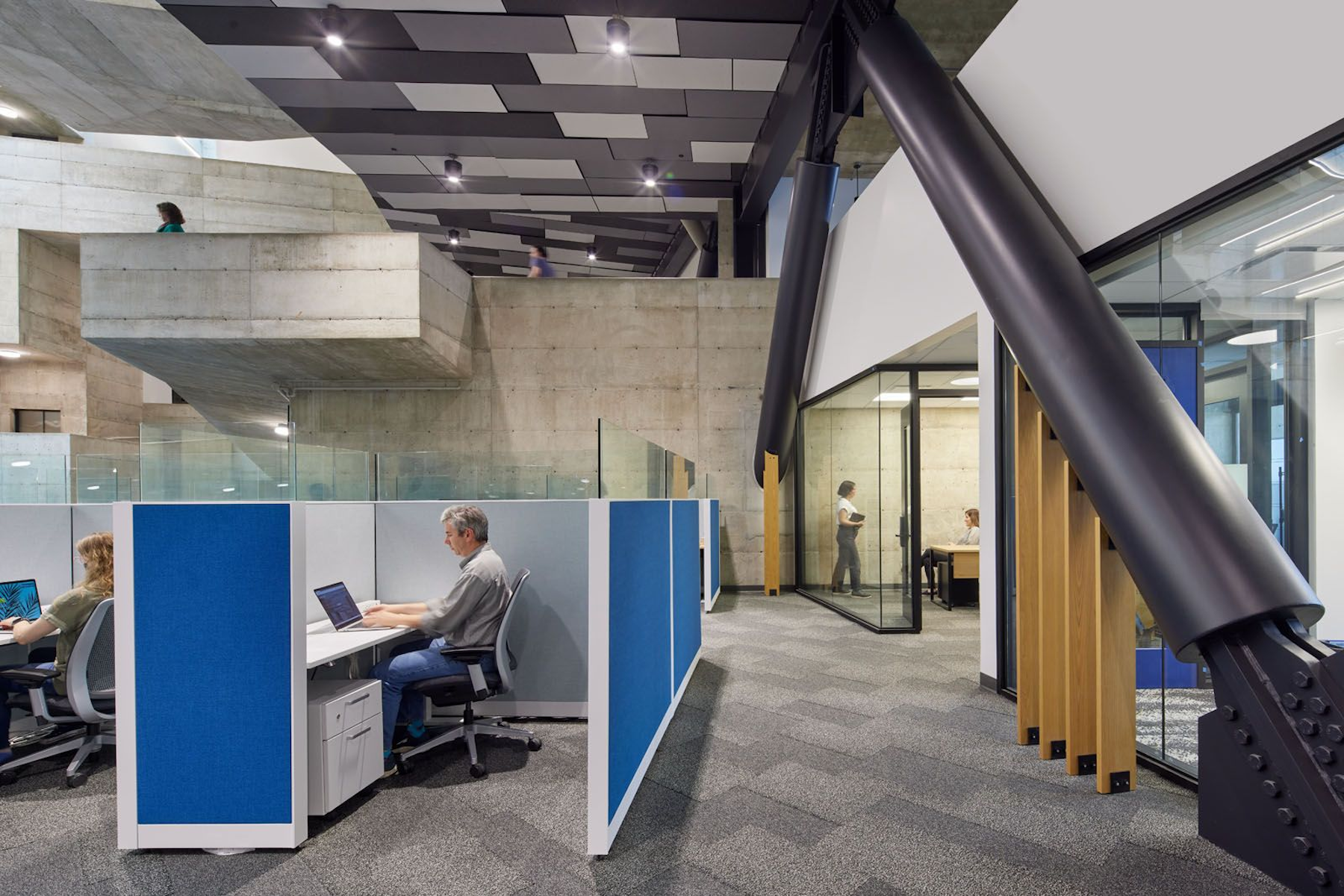
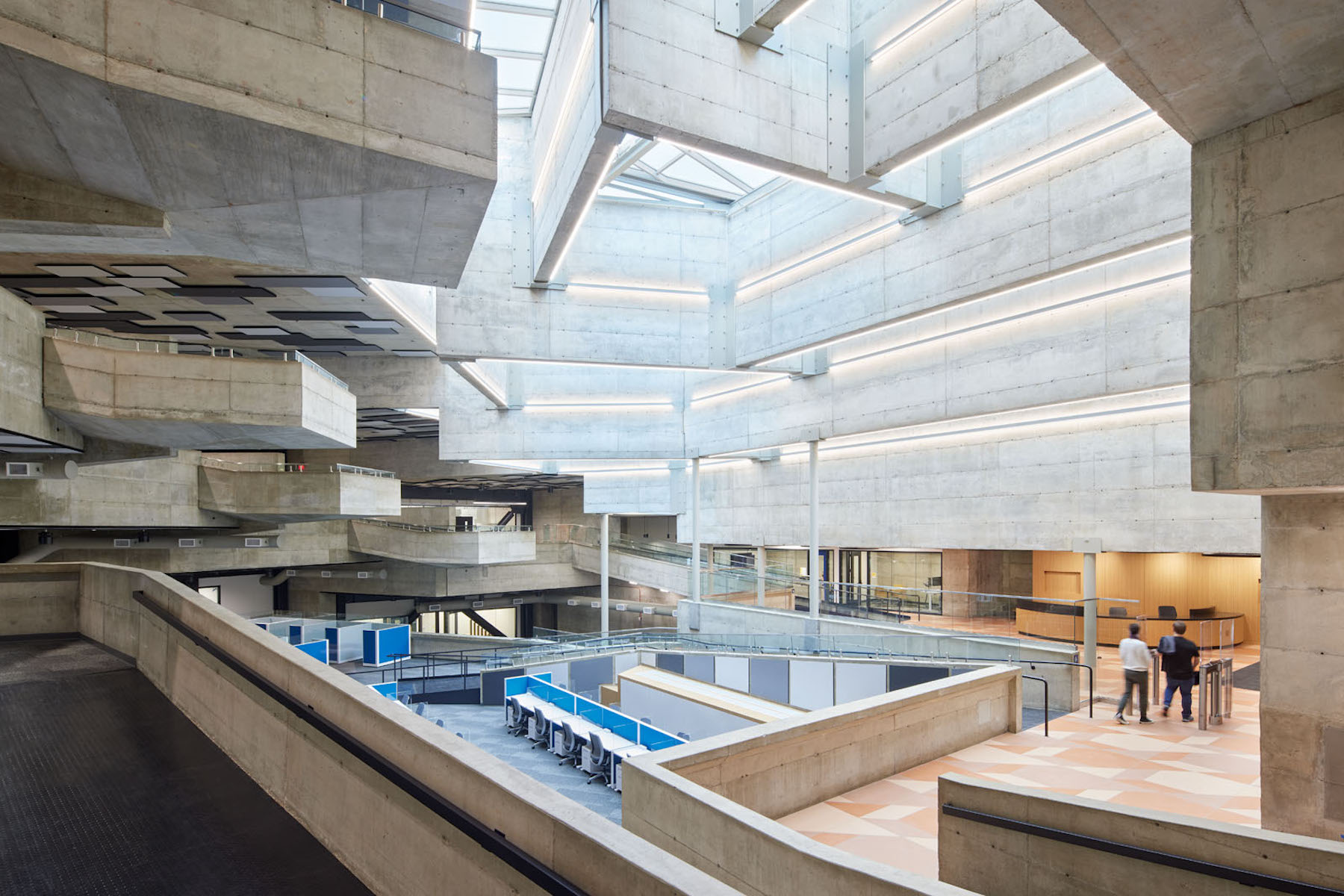
Related Stories
Architects | Aug 5, 2021
Lord Aeck Sargent's post-Katerra future, with LAS President Joe Greco
After three years under the ownership of Katerra, which closed its North American operations last May, the architecture firm Lord Aeck Sargent is re-establishing itself as an independent company, with an eye toward strengthening its eight practices and regional presence in the U.S.
Laboratories | May 6, 2021
The big shift: How laboratory design should respond to personalized medicine
Crucial to the success of personalized medicine is the “big shift” away from large-scale pharmaceutical manufacturing to small-scale lab manufacturing.
Laboratories | Mar 10, 2021
8 tips for converting office space to life sciences labs
Creating a successful life sciences facility within the shell of a former office building can be much like that old “square peg round hole” paradigm. Two experts offer important advice.
Giants 400 | Dec 3, 2020
2020 Science & Technology Facilities Giants: Top architecture, engineering, and construction firms in the S+T sector
HDR, Jacobs, and Turner head BD+C's rankings of the nation's largest science and technology (S+T) facilities sector architecture, engineering, and construction firms, as reported in the 2020 Giants 400 Report.
Giants 400 | Dec 3, 2020
2020 Laboratory Facilities Sector Giants: Top architecture, engineering, and construction firms in the U.S. laboratory facilities sector
Affiliated Engineers, HDR, and Skanska top BD+C's rankings of the nation's largest laboratory facilities sector architecture, engineering, and construction firms, as reported in the 2020 Giants 400 Report.
Laboratories | Nov 16, 2020
Washington State University’s new Plant Sciences Building opens
LMN Architects designed the project.
AEC Tech Innovation | Sep 18, 2020
New Innovation Center should heighten Port San Antonio’s tech profile
The facility will include a 2,500-seat arena and serve as new home for the city’s S&T museum.
Laboratories | Aug 25, 2020
Video: What's driving the boom in life sciences real estate?
JLL's Audrey Symes discusses the drivers of growth across the nation's life sciences cluster hubs.
Laboratories | Jul 24, 2020
Customized labs give universities a recruiting edge
CO Architects is among a handful of firms that caters to this trend.


